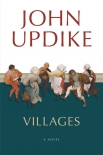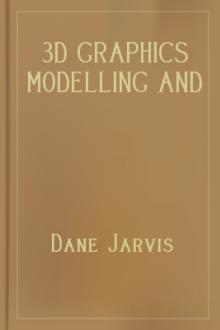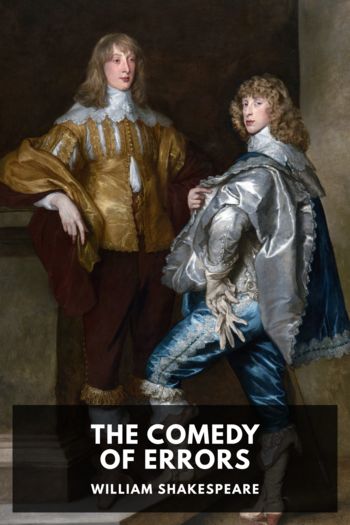Villages, John Updike [brene brown rising strong .TXT] 📗

- Author: John Updike
Book online «Villages, John Updike [brene brown rising strong .TXT] 📗». Author John Updike
Owen can see it all in his mind’s eye as he scrapes at the last of the shaving soap, thrusting his insufficient chin forward to smooth the slack creases underneath. The fire station, if you want to know, is an ornate nineteenth-century structure almost too narrow for the modern fire truck recently purchased by the aldermen in Cabot City, of which Haskells Crossing is an outlying ward; after each call, usually a false alarm, the truck backs into its berth, excitedly beeping, with only a few inches to spare on either side. The war memorial is an expandable list of names, movable white letters on a black, slotted surface behind glass, the dead from Haskells Crossing listed back to the French and Indian War. The largest group fell in the Civil War, the next largest in World War II. Below the Korean conflict (two names) and the Vietnam intervention (four) and the 1991 Iraqi action (a single name, an enlisted man accidentally crushed while helping unload a sixty-seven-ton MIAI Abrams heavy-armor battle tank from the belly of a C-5 Galaxy cargo plane at Saudi Arabia’s Jabayl Airfield), a considerable space has been left for future casualties, in future conflicts. Sensible New England thrift: Owen likes it. He has found his final village here.
The first was in Pennsylvania: the borough of Willow, population four thousand, a “string town” grown, as the nineteenth century became the twentieth, from a wayside inn along the road, surrounded by fields growing corn and tobacco. The road, following a southeasterly river for forty-five miles, eventually reached Philadelphia but was here called Mifflin Avenue, after the quarrelsome first governor of the Keystone State. Three miles in another direction lay a medium-sized city, Alton—Alton, with its factories of blackened brick set right in amid the row houses, its railroad tracks cutting the downtown in two, its red-light district called Pussy Alley, its corner bars faced in Permastone, its movie palaces of pseudo-Islamic grandeur, and its noisy, porky restaurants. “Rip-off joints,” his father called the restaurants. His father hated eating out; he hated being waited on, especially by men, who he felt were more expensive and bullying than waitresses; he hated rich restaurant food, which he sometimes vomited later, as a sign of contempt; he hated dessert, the sales tax, and the tip. Owen’s mother, overweight in all but her son’s earliest memories of her, loved eating well, and would sit there cowed and fuming while her husband methodically ruined her pleasure. Or so it seemed to their only child, who read the marital drama from a limited point of view: though his hair was the dull, safe brown of his father’s—hair so fine it lifted from their heads when they removed their hats or sat near an electric fan—his sympathies lay with his auburn-haired mother. Yet his father’s fear of running out of money sank into his stomach, and gnawed there. Perhaps by no accident did his life’s migration take him northeast, to a region of rocky, shallow soil and reluctant expenditure.
In Pennsylvania, the sandstone inns—seeds of villages some of which thrived and expanded while others became a decaying huddle—were spaced every three miles or so, the distance a man could walk in an hour or a team of horses could pull a farm wagon on a summer day without needing to be watered. Farm life still controlled time. Old people dozed in the middle of the day. Neighbors on the street peddled asparagus, beans, and tomatoes grown in their back yards to one another, and Mifflin Avenue, with its high crown that made rainwater rush in the gutters, resounded in the morning to the languid hoofbeats of horses drawing wagons to the farmers’ market a half-mile away, on the far side of the central thoroughfare, the Alton Pike, which had trolley tracks in its center. By the time Owen was born, in 1933, and was brought home for lack of another home to his grandfather’s house in Willow, Roosevelt was newly in office, and the village, named for a huge old tree hard by the inn, its roots watered by the creek that meandered toward Philadelphia, had been incorporated as a borough. It had grown secondary streets parallel to Mifflin Avenue—Second Street, and then Third and Fourth, climbing a hill where children sledded in winter, down the packed snow, bouncing through the barricaded intersections, until the ride ended with a spurt of sparks on a bed of cinders the borough crew had shovelled from a truck. The sparks, the packed snow, the Christmas trees in the front parlors all along the walk to school—these lasted for only a few days, spotted through a drab, damp winter, but made memories that lasted all year and tugged time forward in a child’s virtual eternity.
Warm weather lasted from March to October. A haze settled over Willow. Owen’s little bedroom, with its wainscoted walls and single bookshelf, overlooked a vacant lot where he often played with the other children of the neighborhood, for an hour after supper in summer, in a milky twilight, the long grass scratchy, going to seed. Fungo, kick-the-can, touch football: girls played them all, since the neighborhood held more girls than boys. Once, in the lot’s matted grasses, flattened and wet with dew—for it was fall and school had begun again—Owen came upon his glasses in the brown snap case that had vanished some days before. Found! He had looked everywhere in the house, and his mother had confided what a grief it would be for his poor father to have to pay





Comments (0)